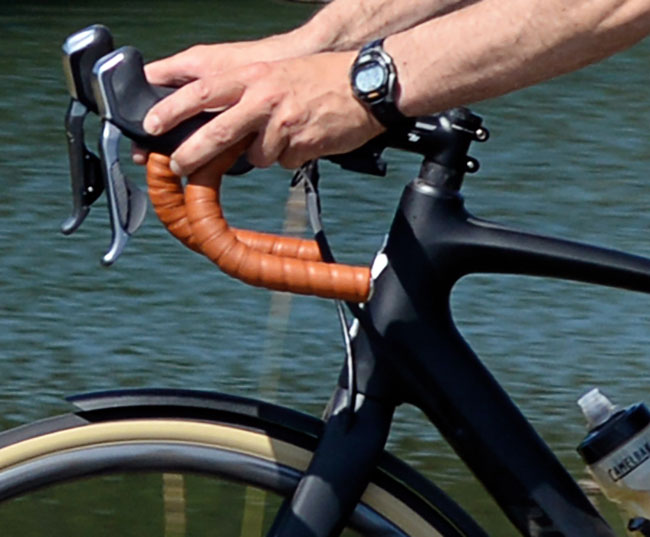Why Handlebar Shapes Are Important

Riders are realizing the importance of handlebar shapes again. In recent decades, makers tried to make ergonomic shapes by flattening the bars where the most useful hand positions are located. But human anatomies vary a lot, and locking riders into a few ‘anatomic’ hand position rarely results in the promised comfort. In fact, rather than locking you into a prescribed position, the most ergonomic bars allow you to find the position that matches your very unique anatomy.
The sweeping curves of classic handlebars allow you to do just that. Depending on the angle at which your wrists are most comfortable, you can move your hands to find exactly that angle. It’s something that was evident to riders and racers during the days when stages were longer and roads were rougher, but it has been somewhat forgotten in recent decades.
Riding classic handlebars, I was surprised how much more comfortable they were than the modern handlebars on my daily riders. That led us to explore classic shapes more and offer handlebars that are quite different from what you see on most bikes today.
Rene Herse Cycles offers two handlebars, the Maes Parallel and the Randonneur. I like them both, as they feel quite different on the road.

The Maes Parallel is great if you change hand positions a lot. The ramps are long and flat, giving you plenty of room to roam. I prefer these bars for fast-paced group riding, where speeds change constantly, and I am moving around to use the most efficient position for the power output required by the group’s speed. The drops are relatively shallow, which suits modern racing bikes with relatively low handlebars.
I use the Maes Parallel handlebars on my Firefly (above) and on our Specialized Diverge long-term test bike.

The Randonneur is great for longer efforts, where you find a good position and stay in it. It’s also great when you aren’t pedaling super-hard, and a little more weight rests on your arms and hands. This doesn’t mean you cannot use these bars to go fast: When it’s time to hammer, you use the hoods or drops for a lower, more powerful riding position. The drop is a bit deeper, to give you a more pronounced difference between riding positions: upright for lower efforts on the ramps, or low for higher speeds in the drops. In between, you have the hoods, and for sliding back on the saddle during climbs, I use the tops.
The upsweep next to the stem isn’t there to raise your bars – it creates a three-dimensional shape that fits perfectly into the palm of your cupped hands. With Randonneur handlebars, it’s extremely important to get the shape “just right”. Otherwise, your bars are less comfortable than handlebars without the upsweep. We tested numerous designs before settling on the shape of the Rene Herse Randonneur handlebars. The differences are subtle, but you’ll notice them soon after you start riding. And the longer you ride, the bigger the differences become. We now offer the Rene Herse Randonneur handlebars in a 500 mm version for those who prefer wide handlebars.
I use the Randonneur bars on my Mule (above) and on the René Herse that I ride in brevets.
Two different handlebars for different riding styles – each optimized for its purpose. Available in a variety of widths and with 25.4 mm and 31.8 mm clamp diameters. We think you’ll enjoy them as much as we do.




